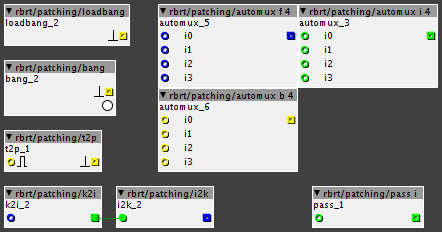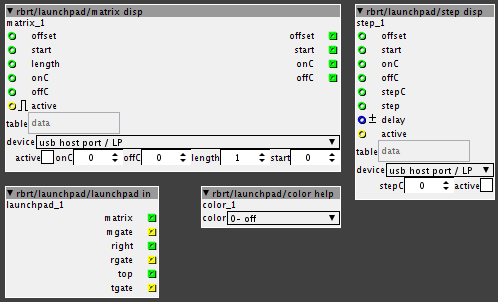...about these,I have to do some self-congratulation:
-disp bool : displays the boolean state of 16 elements of a table,starting at 'offset'
-disp float : displays the value of 16 elements of a table,starting at 'offset'.
(self-congratulation!!)
unfortunaltely,unipolar only since there's no bipolar slider-display.
-tset bool : sets 16 elements to either 0 or max
-test float : sets 16 elements to value.here,bidirectional.
-tclear : sets n elements inside a table to a value,probably most useful to clear the contents of a table.
'tclear' works at audio-rate.I did some testing on this,anway,there may be problems with very long tables.
(again,self-congratulation!)








